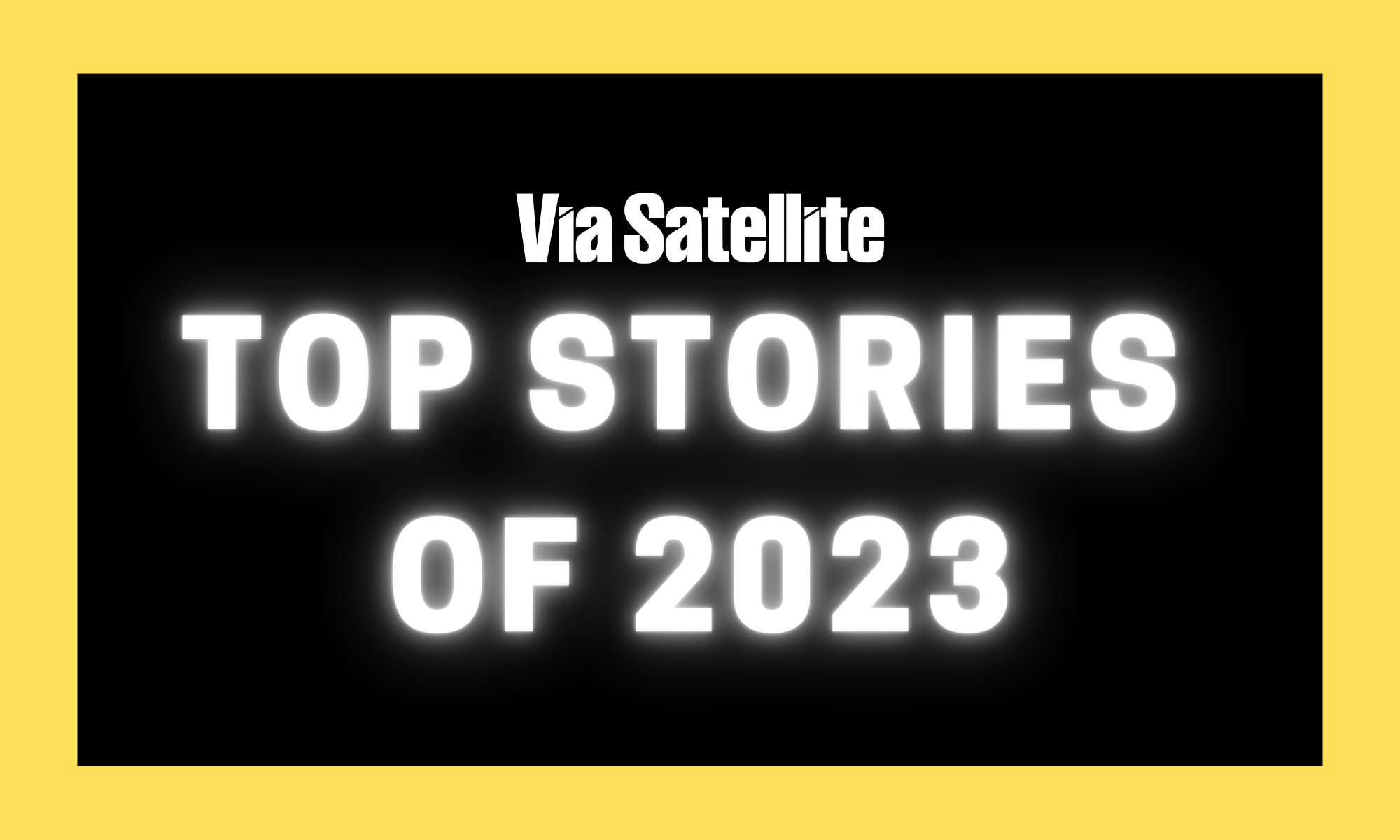Latest News

The past year saw a number of shakeups in the satellite industry — like the Viasat/Inmarsat merger and Steve Collar leaving SES. Both of those operators are also dealing with in-orbit anomalies on their next-generation satellites. At the same time, Low-Earth Orbit (LEO) constellations like Starlink, Kuiper, and Lightspeed moved forward, and the satellite industry is taking stock of how it evolves in this time of change. Here is a look back at some of Via Satellite‘s most-read news stories of 2023.
This round-up is part of our year-end content series. Check out the 2023 in review podcast, where Via Satellite editors analyze some of the top news of the year, and see what songs top industry executives were listening to this year. Also, check out the essential interviews of 2023.
How SpaceX Alums Are Branching Out and Shaping the Startup Economy
For this feature, Rebecca Heilweil spoke with former SpaceX employees-turned-founders about building their own companies, and how they are taking lessons from SpaceX to grow startups in the space sector and beyond. Founders say SpaceX gave them a high-risk tolerance — and a community.
Inmarsat-6 F2 Satellite Suffers ‘Unprecedented’ Anomaly
In late August, Viasat announced that the Inmarsat-6 F2 satellite could be a total loss due to an anomaly with the power subsystem that occurred during orbit raising. It was the second satellite failure for the newly combined Viasat/Inmarsat, and the first failure for an Airbus telecommunications satellite in orbit.
OneWeb, Amazon, and Rivada Solidify Strategies to Differentiate from Starlink
The conversation at World Satellite Business Week around satellite constellations like OneWeb, Amazon’s Project Kuiper, and Rivada Space Networks was driven by how the operators are differentiating themselves to compete with SpaceX’s Starlink constellation.
SpaceX Aims to Offer Starlink Direct-to-Cell Text Service in 2024, IoT By 2025
SpaceX updated its target for direct-to-cell service with the Starlink constellation, announcing it plans to offer messaging in 2024, and voice and data and IoT service by 2025. Starlink is encouraging cellular providers around the world to reach out to use the service to expand their networks.
Viasat Logs $900M Charge and Sharpens Mobility Focus After ViaSat-3 Issue
As Viasat is dealing with the fallout of the anomaly on ViaSat-3, the operator is focusing its energy toward its mobility business versus residential broadband. CEO Mark Dankberg outlined the company’s forward-looking strategy in a call with investors in November, and announced that Viasat is scrapping plans for ViaSat-4 and writing down the cost of investment.
Andy Jassy Talks Kuiper Investment in First Call as Amazon’s CEO
In his first investor call as CEO after succeeding Jeff Bezos, Andy Jassy said the Kuiper satellite constellation is part of a company strategy to invest in the long-term future of Amazon. Jassy said Kuiper is among the long-term investments that could “change broad customer experiences” at Amazon and even become a “fourth pillar” of the company.
Telesat’s Lightspeed is Now Fully Funded, MDA to Build Constellation
Telesat dropped a surprise announcement in August that it was switching manufacturers for the Lightspeed constellation, moving from Thales to MDA. After years of delays, Telesat said the constellation is fully funded and it is moving forward with Canadian manufacturer MDA.
Traditional Operators Start the Fight Back
SpaceX’s Starlink satellite internet constellation is driving industry rivals to elevate their ‘A Game.’ Marissa Torrieri spoke with leaders from five satcom operators — Viasat, SES, Hughes Network Systems, Telesat, and Eutelsat — about the intersection of changing end user needs, increased competition, and what the satellite technology evolutions means for the future.
Analysts Caught Off Guard by Steve Collar’s Sudden Departure from SES, Describe Timing as “Odd”
After Steve Collar’s long history at SES, many analysts were surprised when Collar announced in June he was leaving the company, while SES was in the midst of its launch campaign for O3b mPOWER.
Why 5G New Radio NTN Will Take the Satcom Market by Storm
In this column, Thorleif Astrup Hallund of Gatehouse Satcom makes the case for why 5G New Radio NTN could become the technology that leads to the fusion of terrestrial and non-terrestrial networks.
Interested in getting Via Satellite’s latest news and analysis delivered straight to your inbox? Subscribe to Via Satellite for free.
Get the latest Via Satellite news!
Subscribe Now